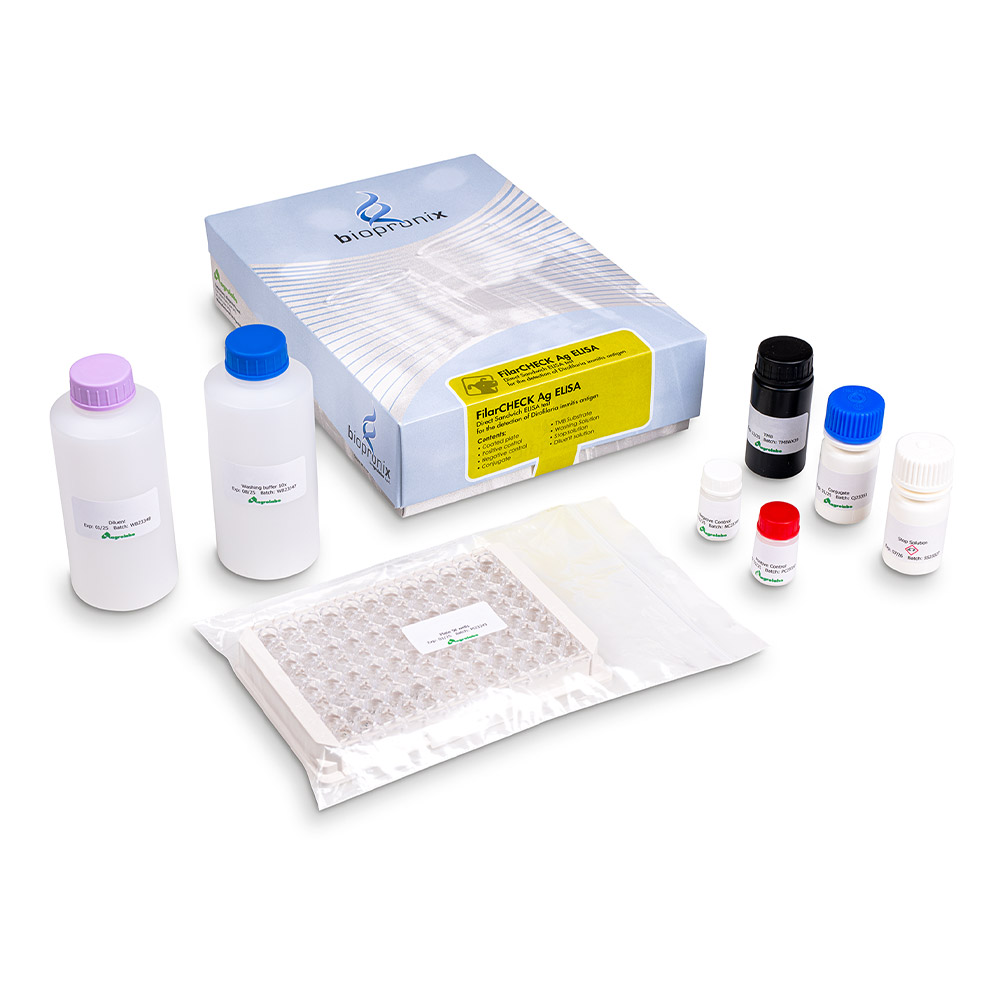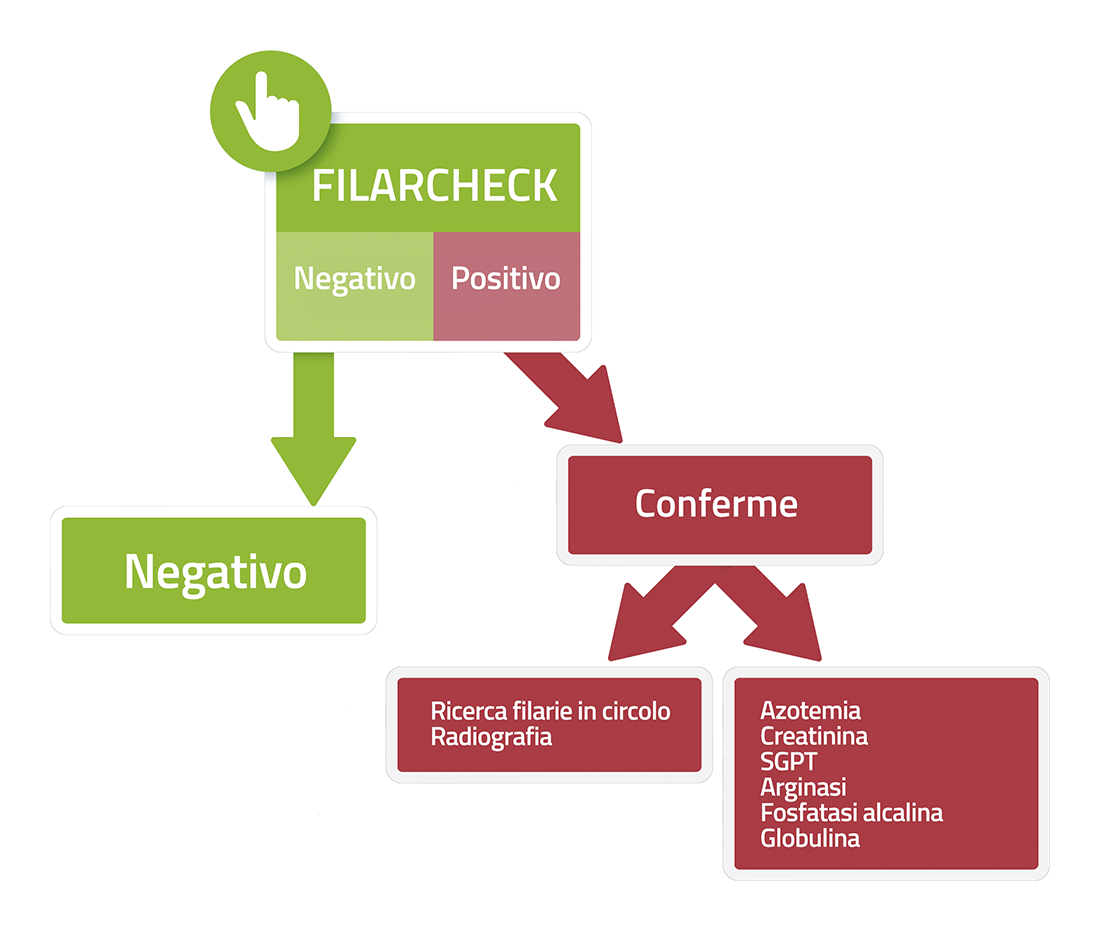FilarCHECK Ag ELISA
ELISA kit for the detection of Dirofilaria immitis antigen
This kit is based on the monoclonal double antibody ELISA immunoassay technique for the detection of Dirofilaria immitis antigen in canine serum or plasma.
Filariasis is caused by Dirofilaria immitis, a nematode whose immature stages are transmitted to dogs and cats through the bites of common and tiger mosquitoes.
The Dirofilaria immitis larvae enter the circulatory system and, once they become adult worms, reside near the heart and lungs, causing heart and respiratory problems. They grow and spread so massively that, if the disease is not diagnosed and treated in time, it can lead to the death of the animal.
Filariasis is generally widespread throughout Italy, mostly present in the Po Valley and surrounding areas. It affects dogs of any breed, gender and age. A higher prevalence of the disease has been reported in male dogs. The animal’s lifestyle influences the probability of developing the disease: large-sized breeds living outdoor are more likely to develop heartworm.
Heartworm disease in dogs generally manifests itself in a very subtle way and the clinical signs are not always easily visible; about four months will pass before the parasites settle in the heart and pulmonary arteries of the animal; then some more time will pass before the parasites reach an amount such as to cause evident symptoms.
Fatigue, poor appetite, difficulty breathing with effort.
Chronic intermittent vomiting also sometimes occurs.
In a more advanced stage we can note:
- weight loss
- increase in respiratory rate
- cough
- erythrocytopenia (reduction in the number of red blood cells)
- increase in abdominal volume
- right heart failure
- epistaxis (nosebleed)
- formation of thromboemboli
- alteration of lung function.

